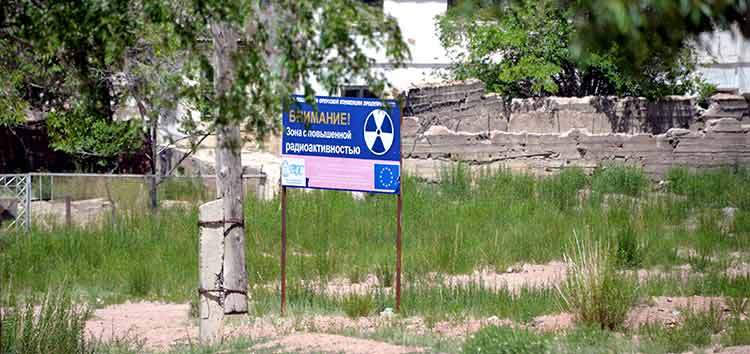BISHKEK (TCA) — The efforts to address the legacy of Soviet era uranium mining in Central Asia is making substantial progress. Following the establishment of the multilateral Environmental Remediation Account for Central Asia (ERA) framework agreements have now been signed with the Kyrgyz Republic, Tajikistan and Uzbekistan, where the fund will operate, the EBRD press office reported on March 31.
The operations will be guided by a strategic master plan which is in the final stages of preparations and based on already-concluded studies covering high priority sites. A first examination of two sites in Kyrgyzstan has established estimated remediation costs of €30 million.
A joint mission by representatives of the European Commission (EC) and the European Bank for Reconstruction and Development (EBRD) to the Kyrgyz Republic from 28-31 March provided the opportunity to discuss the latest developments with the government.
The Minister of Emergency Situations of the Kyrgyz Republic, Kubatbek Boronov, said: “We appreciate the genuine commitment of the EC and the EBRD to support the Kyrgyz Republic in addressing the threat the uranium production legacy poses to the environment and the people in Central Asia, as urgent measures are needed for the sites in Mailuu-Suu, Min-Kush and Shekaftar, where environmental instability still exists. I am confident that today we have reached the next stage of our cooperation, where we can tackle the problems through specific programmes and projects aimed to protect human health and the environment, both at the national and regional levels.”
Cesare de Montis, Head of the EU Delegation to the Kyrgyz Republic, said that: “The environmental remediation in the Kyrgyz Republic is part of the EU’s overall environmental strategy for Central Asia. Addressing the legacy of uranium mining will assist the Kyrgyz Republic in achieving the UN Sustainable Development Goals by improving the living conditions of the people affected by these legacy sites.”
Balthasar Lindauer, EBRD Deputy Director, Nuclear Safety, commented: “We had very open and fruitful discussions with the government and we are very happy with the progress we have made. We are pleased with the Kyrgyz Republic’s readiness to engage with our programme and to play an active role in its implementation. We are confident that with all parties working together we will be able to make real progress in the coming years.”
Recent progress includes:
Development of a strategic master plan. The plan defines the priority uranium legacy sites and the estimated cost of the remediation work. It ensures that works take place on the basis of the highest international standards and best practices. The plan was prepared under the leadership of the International Atomic Energy Agency (IAEA) together with experts from the affected countries and the international community.
Completion of studies in Min-Kush and Shekaftar. The results of an EU-funded environmental impact study and a feasibility study for Min-Kush and Shekaftar in the Kyrgyz Republic were presented to the government. A detailed site characterisation and risk analysis has led to the development of several remediation options. The studies’ results provide a technically sound basis for the remediation work that will improve the living conditions for the local population. A study of the site in Mailuu-Suu is due to be completed by the end of 2018.
Strong support by the international community will be required to address the priorities identified by the strategic master plan. The government of the Kyrgyz Republic has committed to take a lead role in continuing efforts to mobilise further funds from donors.
The Kyrgyz Republic has been invited to participate in the second ERA contributor’s assembly meeting in July 2017 at EBRD’s Headquarters in London. The EBRD established the fund in 2015 at the request of the European Commission and manages it.
Background
The EU’s efforts in environmental remediation in Central Asia are part of the overall EU-Central Asia strategy. These efforts have consistently aimed at facilitating the rehabilitation of radioactive and contaminated uranium production sites to mitigate the environmental and public health risks faced by the Kyrgyz people. The EU has already provided €9 million for detailed environmental impact assessments and feasibility studies at these priority sites, including the Kyrgyz legacy sites of Min-Kush, Shekaftar and Mailuu-Suu.
The EU has also funded a programme with UNDP to raise awareness among both the donor community and the Kyrgyz population of the upcoming remediation works.
The European Union has contributed €16.5 million to ERA and looks forward to working together with other international partners to attract further contributions for the crucial remediation works in Central Asia.
The EBRD manages seven donor funds providing support to increase nuclear safety and reduce radiological risk in eastern Europe and Central Asia. To date, 45 donor countries and institutions have pledged over €4 billion to EBRD-managed nuclear safety projects.



